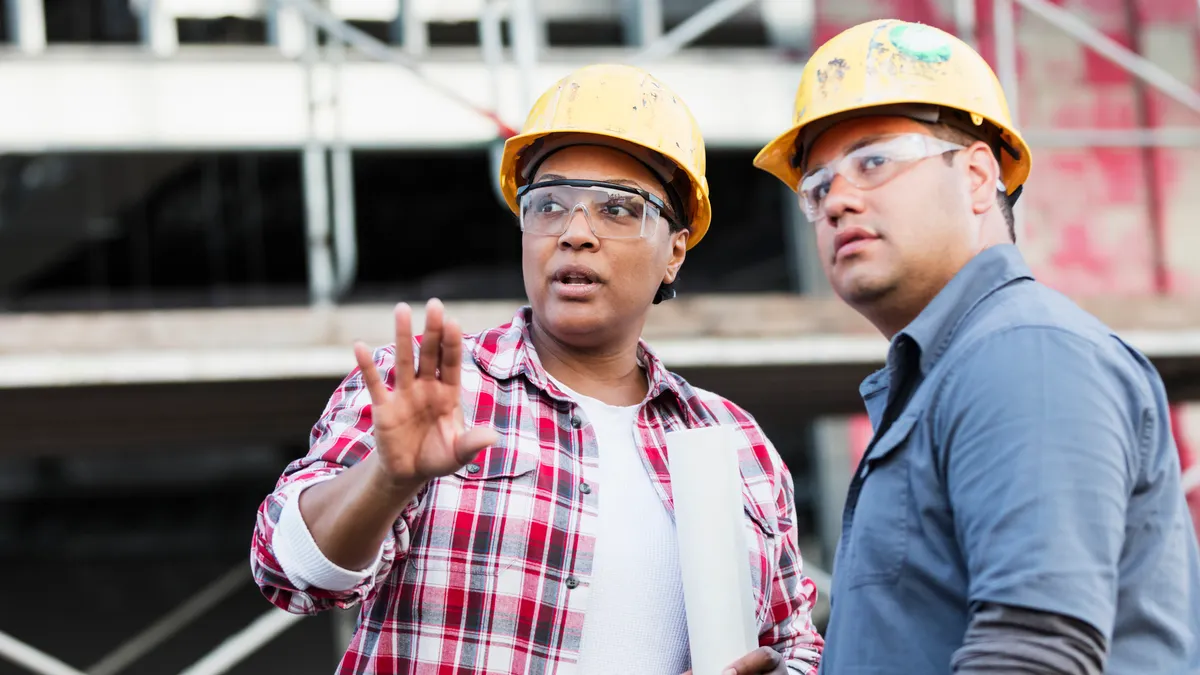Emily Andrews is director of education, labor and worker justice at the Washington, D.C.-based Center for Law and Social Policy. Lauren Sugerman is the director of Chicago Women in Trades’ National Center for Women's Equity in Apprenticeship and Employment.
Opinions are the authors’ own.
Women’s History Month — which concluded last week — provided a moment not only to reflect on all that women have accomplished, but to assess how far we must go to make sure women have the same career and economic opportunities as men.
Because of gender segregation in the job market, women don’t have equal access to jobs in construction and other building trades — something that needs to change sooner rather than later.

There’s an urgency to this since the construction industry is on the verge of a good jobs boom fueled by $2 trillion in investments signed into law over the past two years. The Infrastructure Investment and Jobs Act, the Inflation Reduction Act and the CHIPS and Science Act have the potential to create millions of good jobs that will repair our crumbling infrastructure, bolster green energy production and incentivize domestic manufacturing.
But here’s the catch: Without an intervention from a specific set of players, women — especially women of color — will miss out. Employers, unions and the government can take concrete action to ensure that more women are tapped to fill these jobs. In fact, Massachusetts, Oregon and Chicago have shown it can be done.
More infrastructure, more diversity
Many infrastructure jobs are expected to pay high wages, provide comprehensive benefits and likely include union contract coverage. The work from the infrastructure law alone will require thousands of highly skilled trade workers such as ironworkers, electricians and plumbers, who earn a median salary of $27 per hour or more ($57,000 per year).
Overall, median wages for construction jobs are significantly higher than median wages for all jobs that don’t require a college degree, according to the Bureau of Labor Statistics.
The current infrastructure and green energy sectors, where most of these good jobs will be created, skew heavily white and male. Women are underrepresented in the construction sector, holding just 14.1% of all construction jobs. For construction trades jobs specifically, women hold only 4% of jobs, according to the Institute for Women’s Policy Research.
These same populations are also deeply underrepresented in the green energy sectors of wind, solar and energy-efficient technologies. If current trends persist, women will access only 29% of new jobs created under the infrastructure law.
The lack of diversity in infrastructure jobs comes at a time when the industry is desperate for workers. Amid a competitive job market with record low unemployment levels, employers will need to recruit hundreds of thousands of additional workers to meet the flow of federal investment.
What needs to change?
To increase diversity in these new jobs, employers must pledge to robust hiring and retention goals for women and women of color. To address sexual and racial harassment, they must commit to creating welcoming, harassment-free workplaces through training and policy.

Unions must improve participation goals for women working on federal construction projects by ensuring 20% of their members are women. They can actively recruit women into pre-apprenticeship and other training programs and advocate for pregnancy accommodations, paid family and medical leave and other job benefits.
State agencies must be proactive in how they spend these funds to ensure we are building a diverse and inclusive infrastructure workforce. Transportation officials should use their newly expanded authority to create pipelines to jobs by funding workforce development programs and supportive services, like child care, transportation and funding for tools.
Transportation agencies and state workforce systems should focus existing funding streams on steering women into training opportunities. And state and local entities should also encourage targeted hiring practices for themselves and their contractors, prioritizing workers for open positions based on demographic groups that are protected by equal employment laws.
Making infrastructure jobs accessible to women not only ensures a more equitable distribution of federal investments but will meet critical labor force needs over the next decade. Ending gender segregation in the labor market and clearing a path for women to enter the trades can help ensure that women don’t miss out on good jobs.













